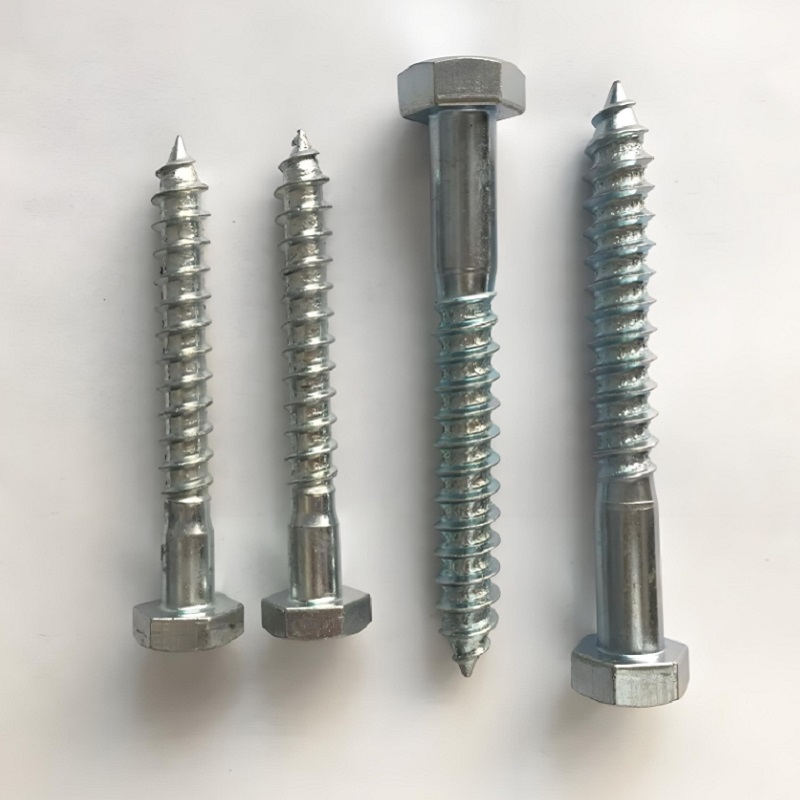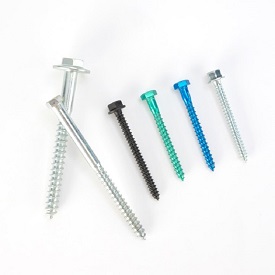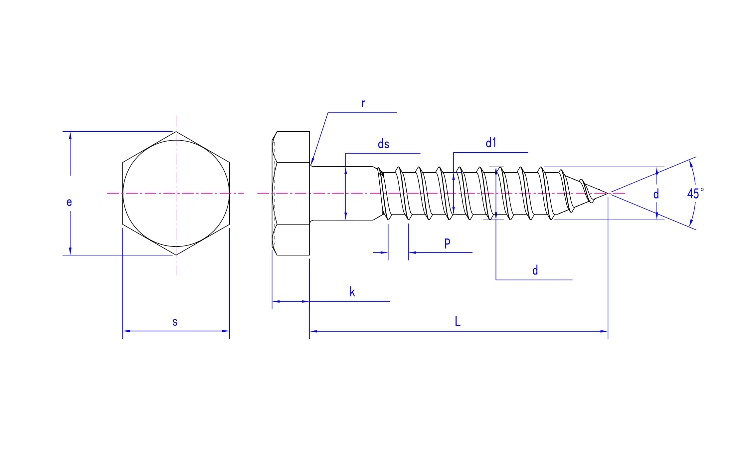Hex Lag Screw
1.ASME B18.2.1-15 Hex Head Lag Screws
2.Own a factory. Eliminate the price difference of middlemen and enjoy price advantage.
3.Adopt top-quality thickened steel in the industry, ensuring high stability and long-lasting durability.
4.Support customer customization.
5. Provide professional sales and after-sales service. Welcome to inquire at any time.
6. Deliver on time.
When it comes to heavy-duty wood-to-wood or wood-to-masonry connections, nothing beats the hex lag screw. Built for strength, durability, and ease of use, hex lag screws (also known as lag bolts) are a go-to solution in construction, woodworking, decking, and home improvement projects.
Whether you're securing ledger boards, building a deck, or anchoring timber frames, a hex lag screw offers the robust fastening you need — without the hassle of nuts or washers. Let’s dive into why this simple, powerful screw belongs in every serious builder’s toolkit.
? “I used hex lag screws for my raised garden bed — strong grip, no splitting, and super easy with a power drill!”
— @BackyardDIYer
What Is a Hex Lag Screw?
A hex lag screw is a large-diameter wood screw with a hexagonal head, designed to be driven directly into wood or pre-drilled holes in masonry using a wrench or impact driver. These screws typically feature coarse threads and a sharp point that delivers maximum holding power in tough materials.
Unlike standard wood screws, hex lag screws are engineered for high-load applications and can handle both lateral and shear forces — making them essential for structural joints and outdoor assemblies.
Key Features of a Hex Lag Screw:
? Hexagonal head for easy grip with socket wrenches or impact drivers
? Deep threading ensures tight, secure fastening
? Versatile — works with wood, concrete (with anchors), and masonry
?️ Available in stainless steel, galvanized, or zinc-coated finishes for corrosion resistance
?️ Sizes range from 1/4" to 1/2" diameter and up to 6" or more in length
? “I used hex lag screws to attach a swing set to pressure-treated posts. Rock solid after 2 years — no rust, no wobble!”
— @HomeFixerDad
Top Use Cases for Hex Lag Screws
Hex lag screws are one of the most reliable fasteners when working with dense or heavy materials. Common applications include:
✅ Deck construction (joists, beams, ledger boards)
✅ Retaining walls and timber frames
✅ Pergolas, fences, and outdoor structures
✅ Mounting heavy items to wood or masonry
✅ Securing posts to concrete with anchors
? “We rebuilt our front porch with 3/8” hex lag screws — those babies aren’t going anywhere!”
— @CraftsmanCrew
How to Install a Hex Lag Screw Properly
Installing a hex lag screw isn’t complicated, but a few steps ensure long-lasting results:
Drill a pilot hole — slightly smaller than the screw’s diameter
Use a washer — for better load distribution and to avoid wood crushing
Drive the screw with a socket wrench or impact driver
Avoid overtightening — snug fit is strong enough
Pro Tip: For masonry installation, use a lag shield or lead anchor inside the pre-drilled hole before inserting the lag screw.
Hex Lag Screw Materials: Which Should You Choose?
| Material | Best For |
|---|---|
| Zinc-Plated Steel | Indoor, dry environments |
| Hot-Dip Galvanized | Outdoor, high-humidity conditions |
| Stainless Steel | Coastal, marine, or chemical exposure |
| Black Oxide | Interior use with a sleek dark finish |
Real Buyer Reviews
⭐️⭐️⭐️⭐️⭐️
"Held up my deck for years!"
"We used 5” hex lag screws with no issues. Great grip and zero rust even in rainy seasons."
— @DeckItRight
⭐️⭐️⭐️⭐️
"Solid quality"
"Perfect for mounting our new barn doors. Hex head makes it easy to torque in tight spaces."
— @ToolTimeTom
⭐️⭐️⭐️⭐️⭐️
"Best value in bulk"
"Ordered a box of 100. Every hex lag screw was perfectly threaded. Saved a ton versus local store."
— @ContractorKev
FAQs About Hex Lag Screws
Q: Do I need to pre-drill for a hex lag screw?
A: Yes. Pre-drilling helps prevent wood splitting and ensures precise placement.
Q: Can I use hex lag screws in concrete?
A: Absolutely, but you’ll need masonry anchors or lag shields for a secure fit.
Q: What size should I use for deck joists?
A: 3/8” x 3” is a common size for deck ledger boards and joist hangers, but always check local code.
Pictures
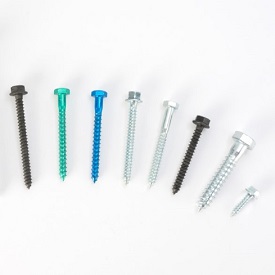

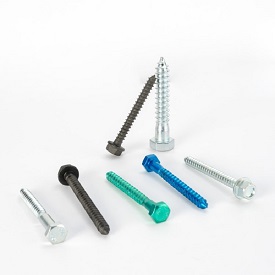
Product drawing

